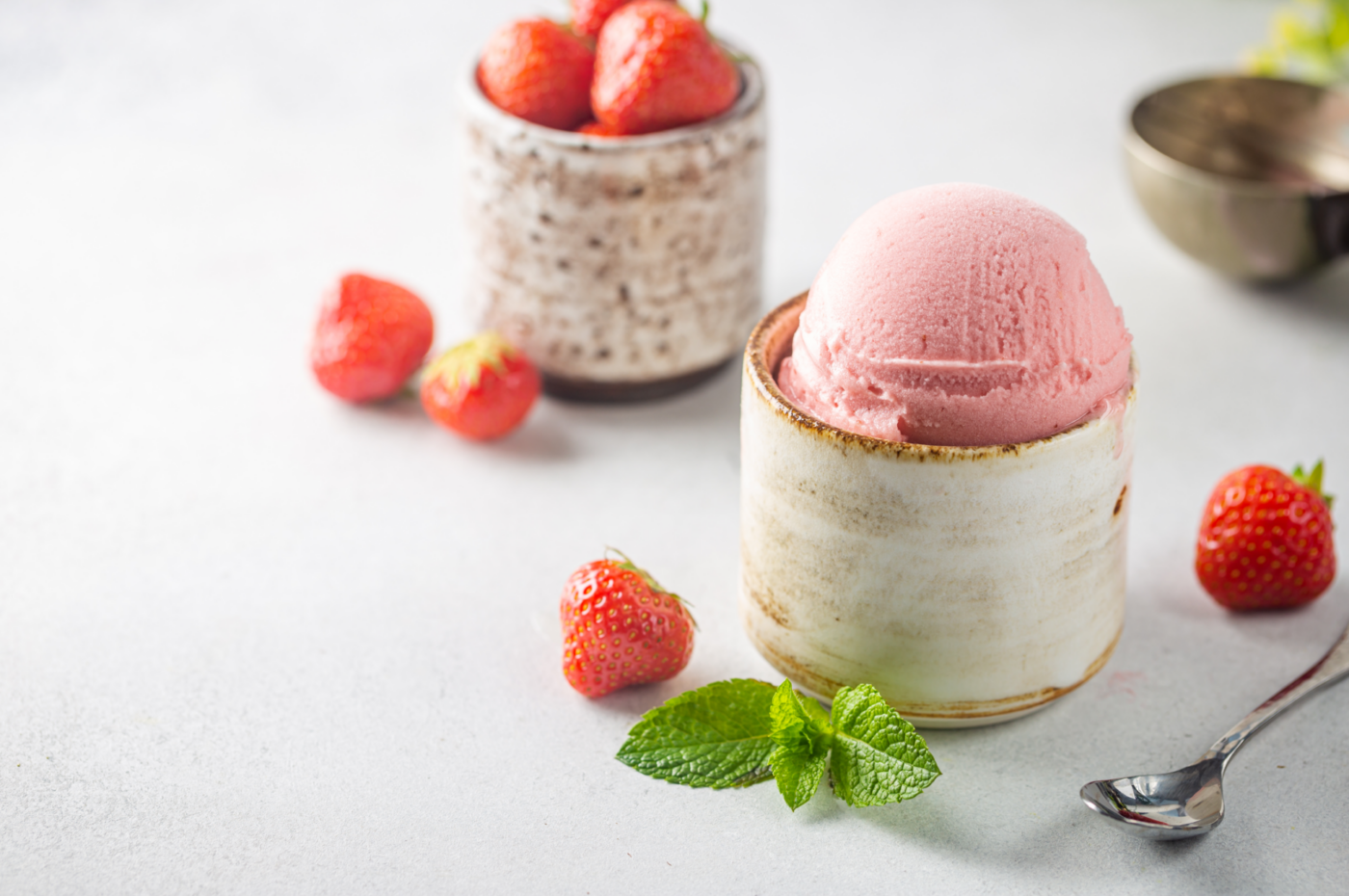Read More: History of Strawberry Ice Cream
Early Frozen Desserts and the Allure of Fruit
The concept of frozen desserts dates back to antiquity. Ancient civilizations in China, Persia, and the Roman Empire enjoyed flavored ices made with snow or ice collected from mountains and stored in underground pits. These early frozen treats were often flavored with fruits, honey, or spices, and it’s plausible that berries, including a form of wild strawberries, might have been used when available.
However, these ancient concoctions were far from the creamy ice cream we know today. They were more akin to flavored ice or sorbet, lacking the dairy component that defines modern ice cream.
The Rise of Ice Cream: A European Transformation
The evolution of ice cream as we know it began in Europe during the 16th and 17th centuries. New freezing techniques involving salt and ice, along with the increasing availability of sugar and cream, led to the creation of smoother, richer frozen desserts.
Italy and France played pivotal roles in this transformation. Italian cooks, particularly those associated with the Medici court, are credited with refining ice cream recipes and introducing them to France in the 16th century when Catherine de’ Medici married King Henry II.
Strawberries: From Royal Gardens to Common Tables
Strawberries, in their cultivated form, also have a fascinating history. While wild strawberries have been consumed for millennia, the large, juicy strawberries we enjoy today are the result of centuries of selective breeding.
In the 18th century, French botanists played a key role in developing new strawberry varieties, including the garden strawberry (Fragaria × ananassa), a hybrid of a North American species and a Chilean species. This new variety, with its larger size and sweeter flavor, quickly gained popularity in Europe.
Initially, strawberries were considered a luxury item, gracing the tables of royalty and the wealthy. King Louis XIV of France, for instance, was known for his fondness for strawberries and had them cultivated in the royal gardens at Versailles.
Early Mentions of Strawberry Ice Cream: A Glimpse into the 19th Century
As both ice cream and strawberries became more accessible, it was only a matter of time before the two were combined. One of the earliest documented mentions of strawberry ice cream in the United States dates back to 1813, when it was served at the second inauguration of President James Madison. This suggests that the flavor was already considered special enough to be served at a prestigious event.
Throughout the 19th century, recipes for fruit-flavored ice creams, including strawberry, began to appear more frequently in cookbooks. These early recipes often involved macerating fresh strawberries in sugar, then straining the mixture and adding it to a custard base before freezing.
The Soda Fountain Era: Strawberry Ice Cream Gains Popularity
The late 19th and early 20th centuries witnessed the rise of soda fountains and ice cream parlors in the United States. These establishments became social hubs, and ice cream, with its growing variety of flavors, became a popular treat.
Strawberry ice cream, with its appealing color and refreshing flavor, was a natural fit for the soda fountain scene. It was often served in scoops, sundaes, and milkshakes, delighting customers with its sweet, fruity taste.
The Neapolitan Connection: A Trio of Classics
It also found a permanent place in the classic Neapolitan trio, alongside vanilla and chocolate. Neapolitan ice cream, which originated in the 19th century, was inspired by the ice cream traditions of Naples, Italy. The combination of three distinct flavors in one block of ice cream proved to be a winning formula, and Neapolitan, with strawberry as a key component, became a staple in American households and ice cream parlors.
Commercialization and Mass Production
The 20th century saw the rise of commercial ice cream production, making ice cream more widely available and affordable. Companies like Breyers and Borden began producing strawberry ice cream on a larger scale, further solidifying its place in the American ice cream landscape.
The use of artificial flavors and colors became more common in commercially produced ice cream, including strawberry. This allowed for a more consistent and vibrant pink color, as well as a stronger, though sometimes less natural, strawberry flavor.
Strawberry Ice Cream Today: Variations and Innovations
Today, strawberry ice cream remains a beloved classic, enjoyed in countless variations around the world. From simple, all-natural versions made with fresh, ripe strawberries to elaborate concoctions featuring swirls of shortcake, cheesecake pieces, or even balsamic glaze, the possibilities are endless.
Some ice cream makers are returning to traditional methods, using fresh, locally sourced strawberries and natural ingredients to create a more authentic and flavorful product. Others are experimenting with new flavor combinations, pairing strawberry with other fruits, herbs, or even spices.
Conclusion: A Flavor with a Timeless Appeal
The history of strawberry ice cream is a journey that spans centuries and continents, reflecting the evolution of both ice cream making and strawberry cultivation. From its possible origins in ancient flavored ices to its current status as a global favorite, it has delighted generations with its sweet, refreshing taste and vibrant color.
It’s a flavor that embodies the simple pleasures of summer, the joy of fresh fruit, and the enduring appeal of a well-made frozen treat. As long as there are strawberries to be picked and ice cream to be churned, strawberry ice cream, in all its delightful variations, will surely continue to be a beloved dessert for generations to come. Its story is a reminder that even the simplest of flavors can have a rich and fascinating history, a blend of culinary innovation, cultural exchange, and the timeless human desire for something sweet and delicious.

Comments